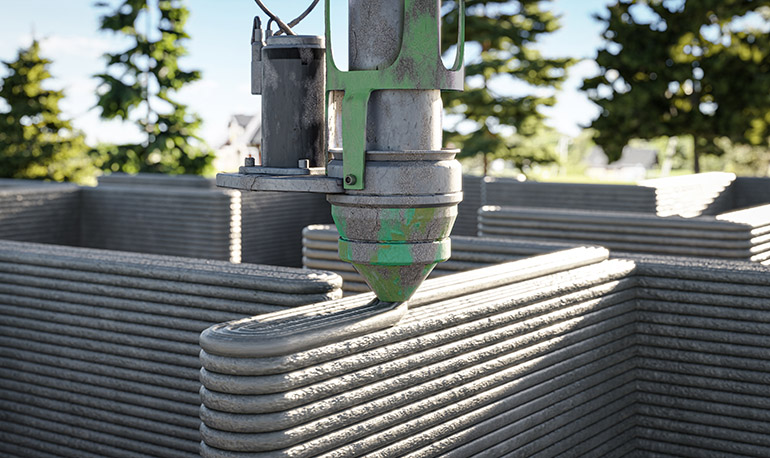|
Listen to this article  |

ISO and ASTM have jointly defined standards for additive manufacturing in construction. Credit: Adobe Stock
Robotic arms and additive manufacturing are changing how materials are handled and how buildings are constructed. However, as robots enter new environments and take on new tasks, the need grows for developers, integrators, and end users to be aware of quality and safety requirements. The International Organization for Standardization, or ISO, has posted documents to help them meet those requirements.
Standard defines safe design for industrial end effectors
An example of relevant industrial standards, ISO/TR 20218-1:2018 provides guidance on the safe design and integration of end effectors for robots. It also adds to ISO 10218-2:2011 on how to integrate robots.
The document covers collaborative robot applications, where robots share workspace with people.
“In such collaborative applications, the end-effector design is of major importance, particularly characteristics such as shapes, surfaces and application function (e.g. clamping forces, residual material generation, temperature),” wrote ISO.
It emphasized the importance of conducting safety assessments. Even when robots are marketed as collaborative, their payloads or motion may not be.
Safety incidents are rare, but interested parties should do their due diligence when developing and deploying robots, noted Aaron Prather, director of robotics and autonomous systems at ASTM International.
ISO and ASTM publish first joint standard for AC
Announced this week, ISO/ASTM 52939:2023 specifies qualification principles for structural and infrastructure elements in additive manufacturing for construction. It provides criteria for additive construction (AC) processes, quality, and factors for system operations, as well as processes on a site.
The new standard applies to all additive manufacturing technologies in building and construction of load bearing and non-load bearing structures, as well as structural elements for residential and commercial applications. It does not cover metals, material properties, operational safety, packaging of equipment and materials, or guidelines for operating specific robots.
ISO/ASTM 52939:2023 is the first jointly published standard from ISO and ASTM International, said Prather. Standards bodies typically focus on different technologies, applications, and industries, but global cooperation can improve worker safety, product quality, and regulatory environments, he noted.
“This addresses moving from traditional construction standards and bridging over to additive,” Prather told The Robot Report. “[It could be] the first step on many to come.”
“This standard also sets the basis for the coming construction robot standards that are in the works across numerous organizations,” he added.
The standard is voluntary, and builders must follow local and regional requirements, noted ISO. In October, ASTM International announced a roadmap for digitalization of the construction industry, sponsored by the National Institute of Science and Technology (NIST).
 Submit your nominations for innovation awards in the 2024 RBR50 awards.
Submit your nominations for innovation awards in the 2024 RBR50 awards.
Additive manufacturing changing construction
Several companies have demonstrated the potential of additive manufacturing for production-grade elements and 3D-printed buildings, including ABB, Branch Technology, HS2, ICON Technology, Mighty Buildings, and SQ4D.
These systems often combine concrete extruders with gantry robots or industrial robot arms. There has also been research into using drones for repair of remote structures, and NASA conducted a 3D-printed habitat challenge in 2019.
Possible advantages include stronger and unique architectures, less waste of materials, and even reduction in carbon emissions, according to research reports from Palgrave Macmillan and Frontiers Media. The global market for 3D printing systems in construction is modest but could increase from $13.38 million in 2023 to $22.63 million by 2030 at a compound annual growth rate (CAGR) of 7.8%, predicted Virtue Market Research.
Credit: Source link


Comments are closed.